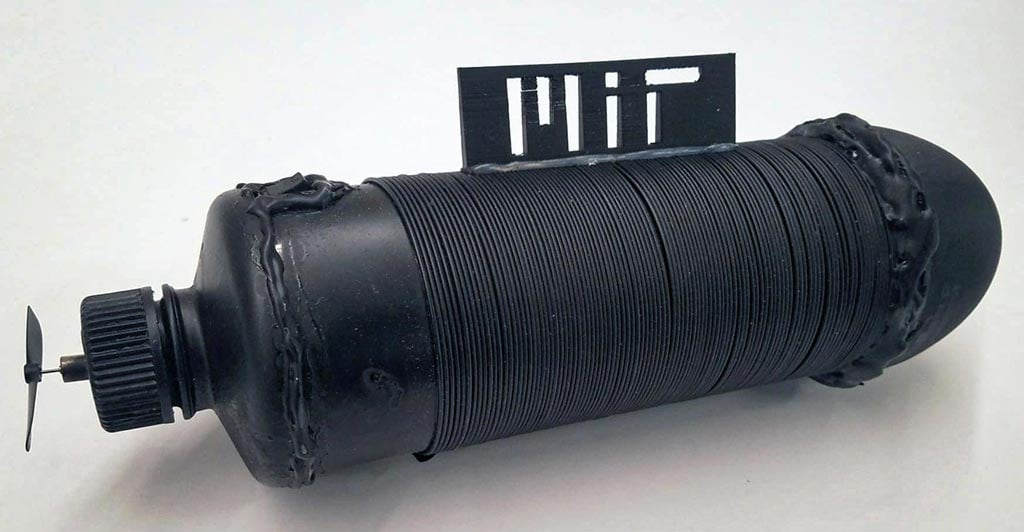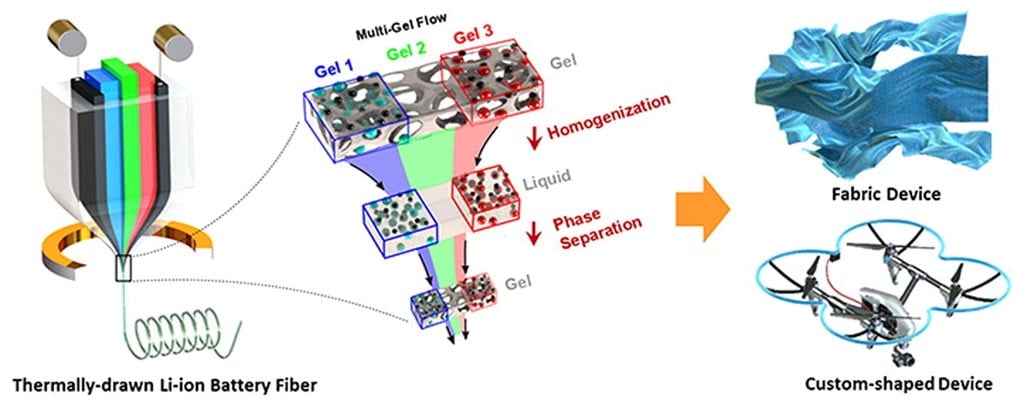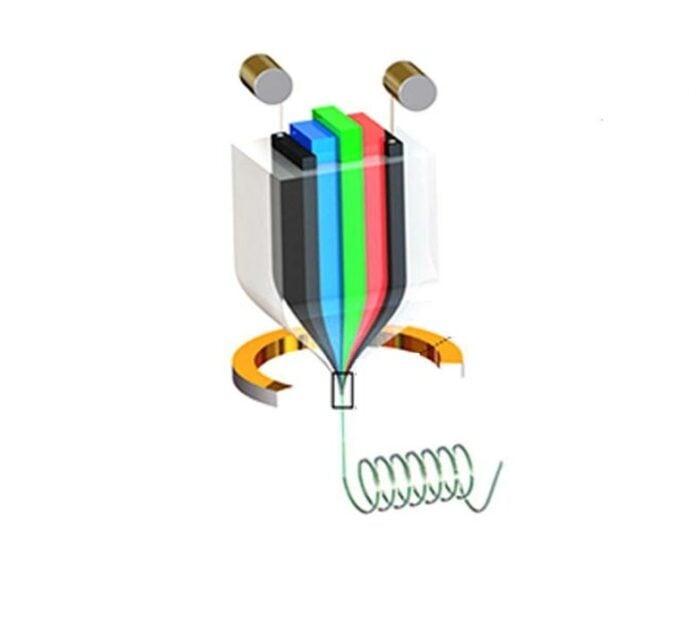Researchers at MIT have developed an ultra-long fibre-like rechargeable lithium-ion battery. The new flexible battery form factor opens up a multitude of deployment possibilities, as well as providing a more elegant solution to some existing devices. As a proof of concept work, the engineers created the world’s longest flexible fibre battery at an astonishing 140m in length.

Flexible batteries are highly desirable for the future of wearable electronics. MIT’s design can be woven and washed, so fits in well with this use case. However, there are many more opportunities than just wearables. The researchers claim that the fibre-like battery opens up “new possibilities for self-powered communications, sensing, and computational devices,” and the battery could be 3D-printed into “virtually any shape,” and be used to strengthen the device structure.
The MIT news journal notes that engineers have previously demonstrated devices as diverse as light emitting diodes (LEDs), photosensors, communications, and digital systems deployed as fibres but haven’t come up with a complementary power source design until now.
Fabricating the fibre battery
The technique for manufacturing these fibre batteries sounds quite ingenious, and is outlined in a diagram below. According to the MIT journal, the battery ingredients are melted, drawn and compressed into narrow tubes. Success in creating a 140m-long flexible fibre battery using this method means there is “no obvious upper limit to the length,” said MIT postdoc Tural Khudiyev. “We could definitely do a kilometre-scale length.”

If you are wondering about the capacity of the 140m long flexible fibre battery, the scientists reveal that it stores a modest 123 milliamp-hours but please keep in mind that these flexible fibres are only a few hundred microns in thickness, thinner than any previous attempts to produce batteries in fibre form.
3D printing with these fibres integrated into the process appears to be an early but attractive use case. Remember above, the researchers can create fibre-like computational devices and other useful electronic fibre components, too.
Optimising work to start
With the above groundwork completed and attractive use cases becoming more apparent, the team is now going to work on power capacity and variations on the materials used to improve efficiency. It is expected that flexible fibre batteries could be ready for commercial uses “within a few years.”
Lead authors of the Thermally drawn rechargeable battery fibre enables pervasive power paper are; MIT postdoc Tural Khudiyev (now an assistant professor at National University of Singapore), former MIT postdoc Jung Tae Lee (now a professor at Kyung Hee University), and Benjamin Grena SM ’13, PhD ’17 (currently at Apple). MIT professors Yoel Fink, Ju Li, and John Joannopoulos, and seven others at MIT and elsewhere, contributed.

